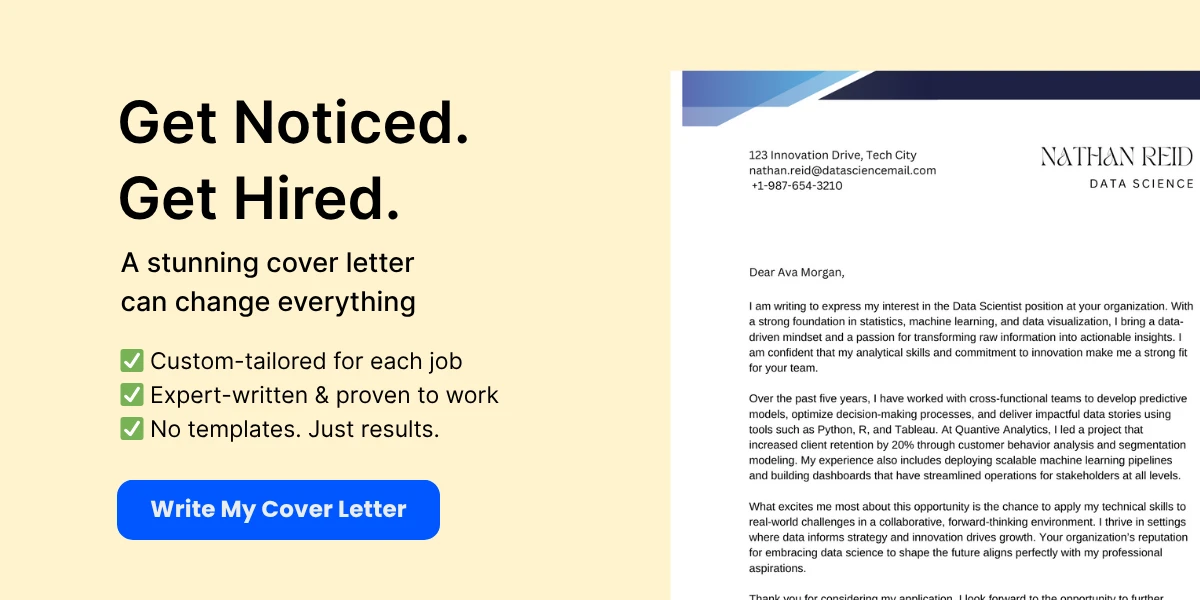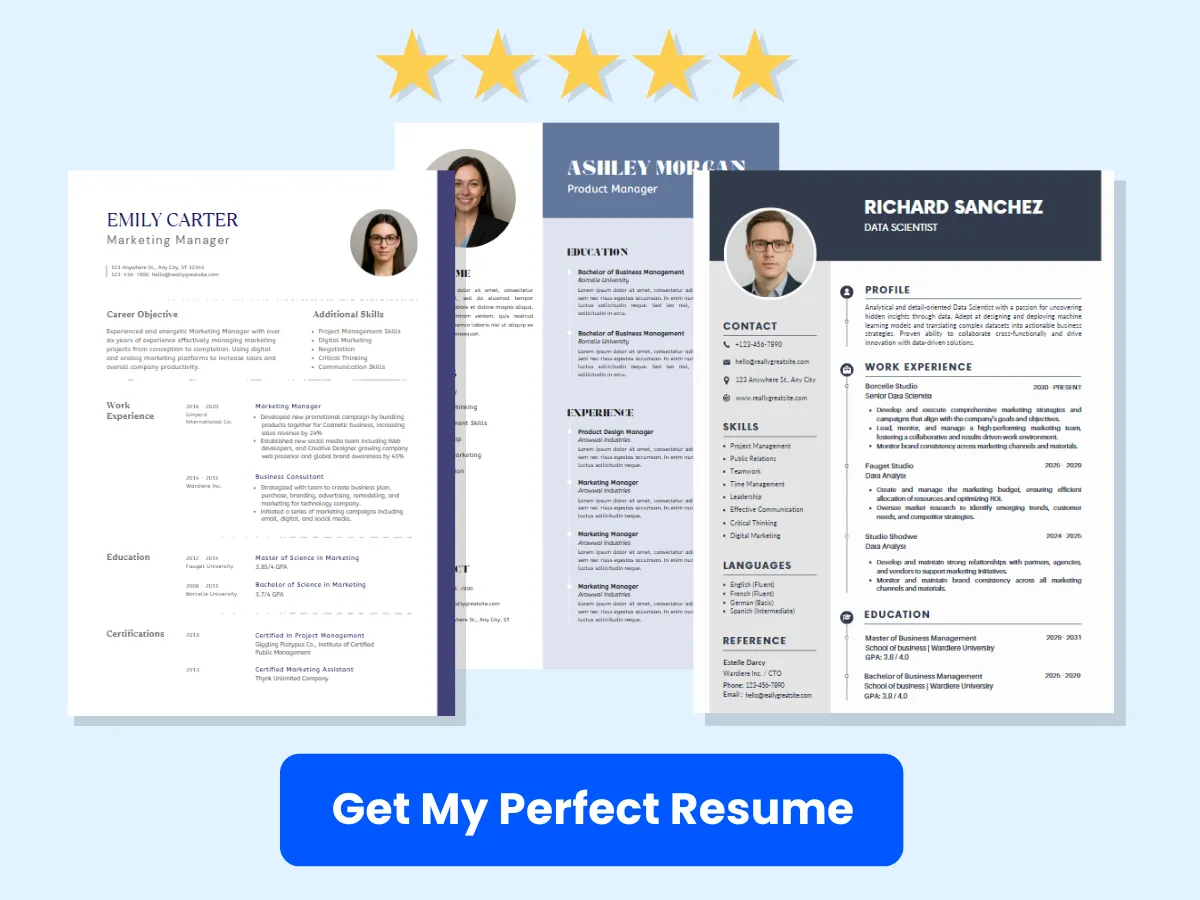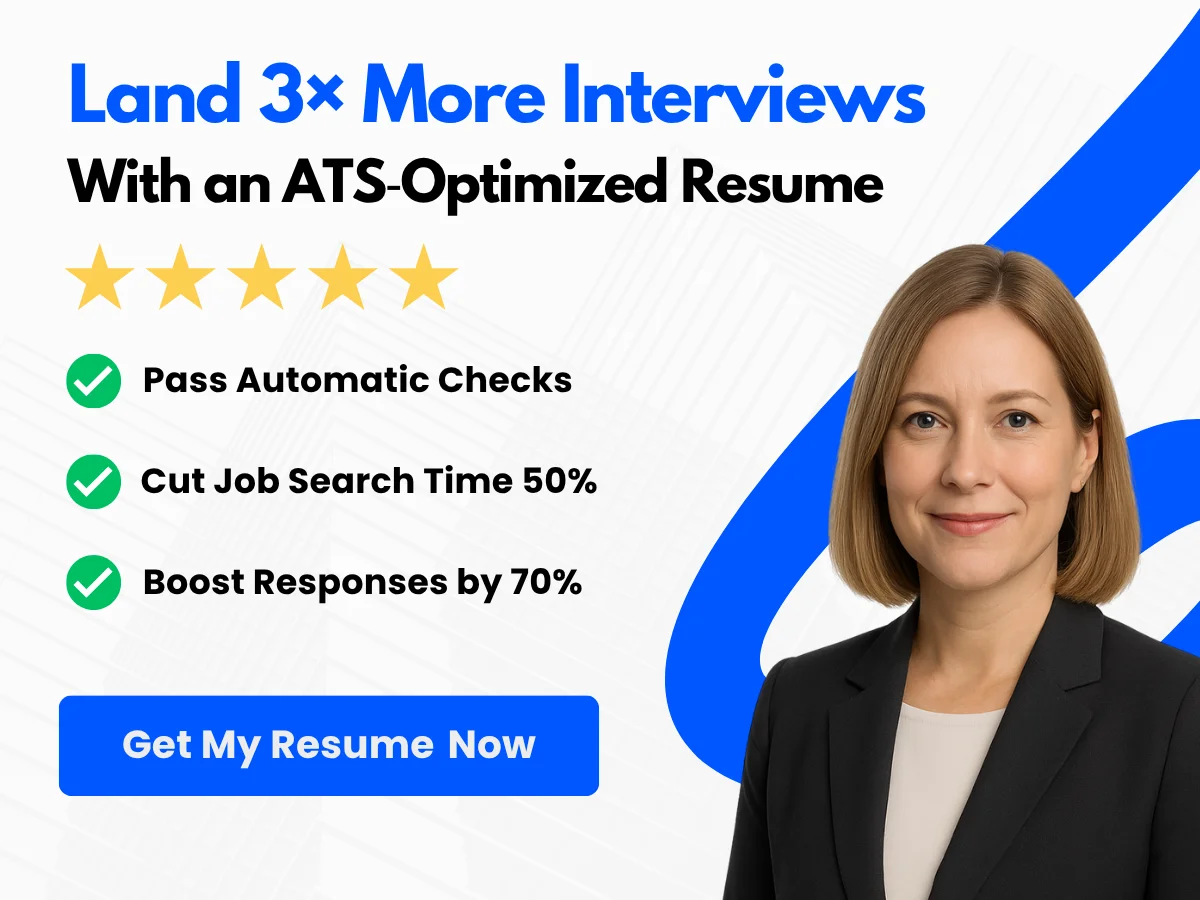Every detail on your resume counts, and none is more critical than the dates you include. Whether you’re a seasoned professional or a recent graduate, the way you present your work history can significantly influence a hiring manager’s perception of your qualifications. Properly formatted dates not only enhance the clarity of your resume but also demonstrate your attention to detail and organizational skills.
This article delves into the best practices for formatting dates on your resume, ensuring that your timeline of experience is both visually appealing and easy to read. We’ll explore various formatting styles, provide practical tips for consistency, and offer templates that cater to different career stages and industries. By the end, you’ll be equipped with the knowledge to present your professional journey in a way that captures attention and leaves a lasting impression.
Why Date Formatting Matters
When it comes to crafting a resume, the details matter immensely, and one of the most critical details is how you format the dates. The way you present your employment history, education, and other relevant experiences can significantly impact the impression you make on potential employers. We will explore the importance of date formatting in resumes, focusing on three key areas: first impressions and professionalism, ATS (Applicant Tracking System) compatibility, and avoiding misinterpretation of employment gaps.
First Impressions and Professionalism
Your resume is often the first point of contact between you and a potential employer. It serves as a reflection of your professionalism and attention to detail. Proper date formatting can enhance the overall presentation of your resume, making it look polished and well-organized. Here are some reasons why first impressions matter:
- Clarity: Clear and consistent date formatting helps hiring managers quickly understand your career timeline. If your dates are jumbled or inconsistent, it can create confusion and lead to a negative impression.
- Professionalism: A well-formatted resume demonstrates that you take your job search seriously. It shows that you are meticulous and care about how you present yourself to potential employers.
- Readability: Hiring managers often skim resumes to find relevant information. A clean and consistent date format allows them to easily locate your work history and qualifications without getting bogged down by unnecessary details.
For example, consider the difference between these two date formats:


1. January 2020 - March 2021 2. 01/2020 - 03/2021
The first format is more readable and professional, while the second may appear cluttered and less formal. Choosing a clear and consistent format can make a significant difference in how your resume is perceived.
ATS (Applicant Tracking System) Compatibility
In today’s job market, many companies use Applicant Tracking Systems (ATS) to filter resumes before they even reach a human recruiter. These systems scan resumes for keywords and specific formatting to determine if a candidate meets the job requirements. Proper date formatting is crucial for ensuring that your resume passes through these systems effectively. Here’s why:
- Keyword Recognition: ATS software is designed to recognize specific keywords and phrases. If your date formatting is inconsistent or unconventional, the system may misinterpret your experience or fail to recognize it altogether.
- Standardization: Using standard date formats (e.g., “MM/YYYY” or “Month YYYY”) increases the likelihood that the ATS will correctly parse your information. Avoid using abbreviations or unconventional formats that the system may not recognize.
- Structured Data: ATS systems often rely on structured data to categorize your experience. Consistent date formatting helps the system accurately place your work history in chronological order, which is essential for evaluating your qualifications.
To ensure your resume is ATS-friendly, consider the following best practices for date formatting:
- Use full month names (e.g., “January 2020”) instead of abbreviations (e.g., “Jan 2020”).
- Maintain consistency throughout your resume. If you choose to write dates in one format, stick to it for all entries.
- Avoid using special characters or symbols that may confuse the ATS, such as slashes or dashes.
By adhering to these guidelines, you can improve your chances of passing through ATS filters and getting your resume into the hands of a hiring manager.
Avoiding Employment Gaps Misinterpretation
One of the most common concerns job seekers have is how to present their employment history, especially if there are gaps. Proper date formatting can help mitigate misunderstandings regarding employment gaps and provide a clearer picture of your career trajectory. Here’s how to effectively present your dates to avoid misinterpretation:
- Be Honest: If you have gaps in your employment history, it’s essential to be honest about them. Use clear date formatting to indicate the periods of employment and any gaps. For example:
XYZ Corporation, Marketing Manager January 2018 - March 2020 Career Break March 2020 - June 2021 ABC Inc., Senior Marketing Specialist July 2021 - Present
In this example, the candidate clearly indicates a career break, which helps to avoid any assumptions about the gap in employment. Being transparent about your career path can build trust with potential employers.


- Use Functional or Combination Resumes: If you have significant gaps or a non-linear career path, consider using a functional or combination resume format. These formats allow you to highlight your skills and accomplishments while minimizing the focus on dates. However, it’s still essential to include dates in a clear and consistent manner to provide context.
- Highlight Relevant Experience: If you have gaps due to education, volunteering, or freelance work, make sure to include these experiences with appropriate dates. This can help fill in the gaps and demonstrate that you were still active in your field or developing new skills.
For instance, if you took time off to pursue further education, you could format it like this:
Master of Business Administration (MBA) University of XYZ September 2020 - June 2022
By including this information, you not only fill the gap but also showcase your commitment to professional development.
Common Date Formats for Resumes
When it comes to crafting a resume, the way you present dates can significantly impact the overall impression you make on potential employers. Dates not only provide a timeline of your professional journey but also reflect your attention to detail and organizational skills. We will explore the most common date formats used in resumes, discussing their advantages, potential drawbacks, and best practices for implementation.
Month/Year Format (e.g., Jan 2020 – Dec 2021)
The Month/Year format is one of the most widely used date formats in resumes. It typically appears as three-letter abbreviations for the month followed by the year, such as Jan 2020 – Dec 2021. This format is favored for several reasons:
- Clarity: It provides a clear and concise representation of your employment duration without overwhelming the reader with unnecessary details.
- Focus on Experience: By omitting specific days, this format allows employers to focus on the length of your experience rather than the exact start and end dates.
- Professional Appearance: The abbreviated month format lends a polished look to your resume, making it more visually appealing.
However, it’s essential to maintain consistency throughout your resume. If you choose this format for one position, use it for all others as well. For example:


Experience Marketing Coordinator XYZ Corporation, Jan 2020 - Dec 2021
Month/Day/Year Format (e.g., 01/15/2020 – 12/31/2021)
The Month/Day/Year format is less common in resumes but can be appropriate in certain contexts, particularly in industries where precise dates are crucial, such as finance or legal professions. This format is typically written as 01/15/2020 – 12/31/2021.
Advantages of this format include:
- Precision: It provides exact dates, which can be beneficial if your roles involved specific projects or achievements that require precise timelines.
- Transparency: Employers can easily verify your employment history, which may be particularly important in fields that require background checks.
However, the Month/Day/Year format can also have drawbacks:
- Clutter: Including specific days can make your resume appear cluttered, especially if you have held multiple positions in a short time frame.
- Less Focus on Experience: This format may shift the focus from your skills and accomplishments to the timeline itself.
When using this format, ensure that it aligns with the overall tone of your resume. For example:
Experience Project Manager ABC Solutions, 01/15/2020 - 12/31/2021
Year Only Format (e.g., 2020 – 2021)
The Year Only format is a straightforward approach that lists only the years of employment, such as 2020 – 2021. This format is particularly useful for individuals with extensive work experience or those who have gaps in their employment history.
Benefits of the Year Only format include:
- Simplicity: It provides a clean and uncluttered look, making it easy for hiring managers to scan your resume quickly.
- Focus on Skills: By omitting specific months, you can draw attention to your skills and achievements rather than the timeline of your employment.
- Gaps in Employment: This format can help mask gaps in employment, as it does not require you to specify exact dates.
However, it’s important to note that this format may not be suitable for all industries. Some employers may prefer more detailed timelines. If you choose this format, consider providing additional context in your cover letter or during the interview. For example:


Experience Software Engineer Tech Innovations, 2020 - 2021
Full Date Format (e.g., January 15, 2020 – December 31, 2021)
The Full Date format provides the most detail, listing the full month name, day, and year, such as January 15, 2020 – December 31, 2021. This format is less common in resumes but can be effective in specific situations.
Advantages of the Full Date format include:
- Detail-Oriented: It demonstrates a high level of detail and can be beneficial in industries that value precision and thoroughness.
- Clear Timeline: This format provides a clear and comprehensive timeline of your employment history, which can be advantageous for roles that require extensive experience.
However, there are some potential downsides:
- Length: This format can make your resume longer and may take up more space than necessary, especially if you have held many positions.
- Visual Clutter: Including full dates can create visual clutter, making it harder for hiring managers to quickly scan your resume.
When using the Full Date format, ensure that it fits the overall style of your resume. For example:
Experience Data Analyst Global Insights, January 15, 2020 - December 31, 2021
Choosing the Right Format for Your Resume
When deciding which date format to use on your resume, consider the following factors:
- Industry Standards: Research the norms within your industry. Some fields may have specific preferences for date formats.
- Length of Employment: If you have held a position for a short time, a Month/Year format may be more appropriate. For longer tenures, consider using the Year Only format.
- Personal Preference: Ultimately, choose a format that you feel comfortable with and that aligns with your professional brand.
Regardless of the format you choose, consistency is key. Ensure that all dates throughout your resume follow the same format to maintain a professional appearance. Additionally, always double-check for accuracy to avoid any discrepancies that could raise red flags with potential employers.


Best Practices for Date Formatting
When it comes to crafting a resume, the way you present dates can significantly impact how your experience is perceived by potential employers. Proper date formatting not only enhances the readability of your resume but also conveys professionalism and attention to detail. We will explore best practices for date formatting, including the importance of consistency, choosing the right format for your industry, highlighting recent experience, and effectively handling overlapping jobs.
Consistency Across the Resume
One of the cardinal rules of resume writing is consistency. This principle applies to date formatting as well. Inconsistent date formats can confuse hiring managers and detract from the overall professionalism of your resume. Here are some key points to consider:
- Choose a Format: Decide on a date format that you will use throughout your resume. Common formats include:
- Month Year (e.g., January 2020)
- MM/YYYY (e.g., 01/2020)
- YYYY (e.g., 2020)
- Month Day, Year (e.g., January 1, 2020)
- MM/DD/YYYY (e.g., 01/01/2020)
- Apply Uniformly: Once you select a format, apply it uniformly across all sections of your resume, including your work experience, education, and any relevant certifications.
- Be Mindful of Spacing: Ensure that the spacing around your dates is consistent. For example, if you use a space after the month, make sure to do so for all entries.
By maintaining consistency in your date formatting, you create a polished and professional appearance that can help you stand out in a competitive job market.
Choosing the Right Format for Your Industry
Different industries may have varying expectations regarding date formatting. Understanding these nuances can help you tailor your resume to better fit the norms of your target field. Here are some industry-specific considerations:
- Creative Fields: In industries such as graphic design, marketing, or the arts, you may have more flexibility in your formatting. A visually appealing layout with creative date presentation can work in your favor. For example, you might use a timeline format or incorporate colors that align with your personal brand.
- Corporate and Finance: In more traditional fields like finance, law, or corporate management, a straightforward and formal date format is preferred. Stick to the Month Year format (e.g., January 2020) to convey professionalism and clarity.
- Technology: In the tech industry, where rapid changes occur, it’s essential to highlight your most recent experience. Use the Month Year format to emphasize your latest roles and projects, as this can demonstrate your up-to-date skills and knowledge.
- Education: If you are a recent graduate, consider including your graduation date prominently. Use the Month Year format for clarity, and if you have relevant coursework or projects, include the dates to showcase your recent academic experience.
By aligning your date formatting with industry standards, you can better resonate with hiring managers and demonstrate your understanding of the field.
Highlighting Recent Experience
In today’s fast-paced job market, employers often prioritize recent experience. Therefore, it’s crucial to highlight your most relevant and recent roles effectively. Here are some strategies to ensure your recent experience stands out:


- Place Recent Roles First: When listing your work experience, always start with your most recent job and work backward. This reverse chronological order allows hiring managers to quickly see your latest accomplishments.
- Use Bold or Italics: Consider using bold or italics for the dates of your most recent positions. This subtle emphasis can draw attention to your latest experience without overwhelming the reader.
- Include Specific Dates: Instead of just listing years, include the month and year for your most recent roles. For example, instead of writing “2020 – Present,” write “January 2020 – Present.” This specificity provides a clearer picture of your current employment status.
- Highlight Achievements: Under each recent position, focus on quantifiable achievements and responsibilities. Use bullet points to make this information easy to digest, and consider starting each bullet with an action verb to convey impact.
By effectively highlighting your recent experience, you can capture the attention of hiring managers and demonstrate your relevance to the position you are applying for.
Handling Overlapping Jobs
Many professionals have overlapping jobs, whether due to part-time work, freelancing, or transitioning between roles. Effectively presenting overlapping jobs on your resume can be challenging, but it’s essential to do so clearly and honestly. Here are some tips for handling overlapping jobs:
- Use Clear Dates: When listing overlapping jobs, ensure that the dates are clearly indicated for each position. For example:
Marketing Specialist
ABC Company, New York, NY
January 2020 - Present
Freelance Marketing Consultant
Self-Employed, Remote
March 2020 - Present
By handling overlapping jobs transparently and effectively, you can showcase your diverse experience and ability to manage multiple responsibilities, which can be an attractive quality to potential employers.
The way you format dates on your resume can significantly influence how your experience is perceived. By adhering to best practices such as maintaining consistency, choosing the right format for your industry, highlighting recent experience, and effectively managing overlapping jobs, you can create a resume that stands out and effectively communicates your qualifications to potential employers.
How to List Dates for Different Sections
When crafting a resume, the way you present dates can significantly impact the overall impression you make on potential employers. Dates not only provide a timeline of your professional journey but also help recruiters gauge your experience and qualifications at a glance. We will explore how to effectively list dates for various sections of your resume, including Work Experience, Education, Certifications and Courses, and Volunteer Work and Internships. Each section has its own nuances, and understanding these can enhance the clarity and professionalism of your resume.
Work Experience
In the Work Experience section, dates are crucial as they outline your employment history and the duration of your roles. Here are some best practices for formatting dates in this section:


- Format: Use a consistent format throughout your resume. Common formats include:
- Month Year – Month Year (e.g., January 2020 – March 2022)
- Year – Year (e.g., 2020 – 2022)
- Placement: Place the dates on the right side of the job title or company name. This layout allows for easy scanning and keeps the focus on your roles and achievements.
- Consistency: Ensure that you use the same date format for all entries. If you choose to list months for one job, do so for all jobs.
Example:
Marketing Manager XYZ Corporation, New York, NY January 2020 – March 2022 - Developed and implemented marketing strategies that increased brand awareness by 30%.
In this example, the date format is clear and consistent, making it easy for the reader to understand the timeline of employment.
Education
When listing your educational background, the date format can vary slightly based on the level of education and the relevance to the job you are applying for. Here are some tips:
- Format: Similar to work experience, you can use:
- Month Year (e.g., May 2021)
- Year (e.g., 2021)
- Placement: Place the date after the degree and institution name. This helps to highlight your qualifications first.
- Relevance: If you graduated recently, consider including your graduation date. For older degrees, you may omit the date if it is not relevant to the position.
Example:
Bachelor of Science in Marketing University of California, Los Angeles Graduated: June 2021
In this example, the date is clearly stated, providing a straightforward timeline of the candidate’s educational achievements.
Certifications and Courses
Certifications and courses can enhance your resume by showcasing your commitment to professional development. When listing these, consider the following:
- Format: Use a consistent format for dates, such as:
- Month Year (e.g., September 2022)
- Year (e.g., 2022)
- Placement: List the date after the certification or course title. This keeps the focus on the qualification itself.
- Relevance: Only include certifications and courses that are relevant to the job you are applying for. This helps to keep your resume concise and focused.
Example:
Certified Digital Marketing Professional Digital Marketing Institute Completed: September 2022
In this example, the date is clearly associated with the certification, making it easy for employers to see when the candidate completed their training.
Volunteer Work and Internships
Including volunteer work and internships can provide valuable insights into your skills and character. When listing these experiences, follow these guidelines:
- Format: Use the same date format as your work experience, such as:
- Month Year – Month Year (e.g., June 2021 – August 2021)
- Year (e.g., 2021)
- Placement: Place the dates next to the role title or organization name, similar to how you would format work experience.
- Relevance: Highlight volunteer work and internships that are relevant to the job you are applying for. This can demonstrate your commitment and skills in a practical context.
Example:
Marketing Intern Nonprofit Organization, San Francisco, CA June 2021 – August 2021 - Assisted in the development of marketing materials for fundraising campaigns.
In this example, the date format is consistent with the rest of the resume, and the placement allows for easy reading and understanding of the candidate’s experience.
Final Tips for Listing Dates
As you prepare your resume, keep these final tips in mind to ensure your dates are presented effectively:
- Be Honest: Always provide accurate dates. Misrepresenting your experience can lead to serious consequences if discovered.
- Use a Reverse Chronological Order: List your experiences starting with the most recent. This format is preferred by most employers and makes it easy to see your latest accomplishments first.
- Consider Gaps: If you have significant gaps in your employment or education history, be prepared to explain them in an interview. You can also consider including relevant activities during those gaps, such as freelance work or personal projects.
- Keep It Simple: Avoid overly complicated date formats or excessive detail. Clarity is key in making your resume easy to read.
By following these guidelines for listing dates in different sections of your resume, you can create a clear, professional, and impactful document that effectively showcases your qualifications and experiences.
Addressing Employment Gaps
Employment gaps can be a source of concern for job seekers, especially in a competitive job market. However, how you present these gaps on your resume can significantly impact how potential employers perceive your work history. We will explore effective strategies for formatting dates to minimize the visibility of employment gaps, how to explain these gaps in your cover letter or during an interview, and the benefits of using functional or combination resume formats.
How to Format Dates to Minimize Gaps
When it comes to formatting dates on your resume, the goal is to present your work history in a way that highlights your skills and experiences while downplaying any gaps. Here are some effective strategies:
- Use Years Instead of Months: One of the simplest ways to minimize the appearance of gaps is to list only the years of employment rather than the specific months. For example, instead of writing “January 2019 – March 2020,” you can format it as “2019 – 2020.” This approach can help obscure short gaps between jobs.
- Group Similar Experiences: If you have multiple short-term positions or freelance work, consider grouping them under a single heading. For instance, you could create a section titled “Freelance Graphic Design” and list all relevant projects with the years you worked. This not only minimizes gaps but also showcases your continuous engagement in your field.
- Highlight Relevant Skills: If you have taken time off for personal reasons, education, or caregiving, consider including a “Skills” or “Professional Development” section. Here, you can list any relevant skills or courses you completed during your time away from the workforce, which can help demonstrate your commitment to professional growth.
- Use a Summary Statement: A well-crafted summary statement at the top of your resume can help frame your experience positively. Focus on your skills, achievements, and what you bring to the table, rather than the timeline of your employment.
By employing these formatting techniques, you can effectively minimize the visibility of employment gaps and present a more cohesive work history.
Explaining Gaps in a Cover Letter or Interview
While formatting can help, there may still be instances where you need to address employment gaps directly. Here are some tips on how to explain these gaps in your cover letter or during an interview:
- Be Honest and Direct: If you have a gap in your employment history, it’s essential to be honest about it. Whether you took time off for personal reasons, health issues, or to care for a family member, a straightforward explanation can help alleviate concerns. For example, you might say, “I took a year off to care for my elderly parent, during which I also completed several online courses to enhance my skills.”
- Focus on the Positive: When discussing your gap, pivot the conversation towards what you learned or how you grew during that time. Highlight any skills you developed, volunteer work you engaged in, or relevant courses you completed. This approach shows that you remained proactive and committed to your professional development.
- Practice Your Explanation: Before your interview, practice how you will explain your employment gap. This preparation will help you deliver your explanation confidently and succinctly, allowing you to move on to discussing your qualifications and fit for the role.
- Keep It Brief: While it’s important to address the gap, avoid dwelling on it. Provide a brief explanation and then steer the conversation back to your skills, experiences, and how you can contribute to the company.
By being honest and focusing on the positive aspects of your time away from the workforce, you can effectively address employment gaps in a way that reassures potential employers.
Using Functional or Combination Resume Formats
Another effective strategy for addressing employment gaps is to consider using a functional or combination resume format. These formats allow you to emphasize your skills and experiences rather than your chronological work history.
Functional Resume Format
A functional resume focuses on your skills and qualifications rather than the timeline of your employment. This format is particularly useful for individuals with significant employment gaps or those changing careers. Here’s how to structure a functional resume:
- Skills Section: Start with a strong skills section that highlights your relevant abilities. Group similar skills together and provide examples of how you’ve applied them in past roles or projects.
- Professional Experience: Instead of listing jobs chronologically, create a section titled “Professional Experience” where you can briefly mention your previous roles without focusing on dates. For example, you might list “Marketing Coordinator” and provide bullet points detailing your responsibilities and achievements without specifying the dates.
- Education and Certifications: Include a section for your education and any relevant certifications. This can help demonstrate your qualifications and commitment to your field.
By using a functional resume format, you can effectively highlight your skills and downplay any employment gaps.
Combination Resume Format
A combination resume merges elements of both chronological and functional formats. This approach allows you to showcase your skills while still providing a timeline of your work history. Here’s how to structure a combination resume:
- Summary Statement: Begin with a summary statement that highlights your key skills and experiences. This section should capture the attention of hiring managers and set the tone for the rest of your resume.
- Skills Section: Follow the summary with a skills section that emphasizes your most relevant abilities. This can be similar to the skills section in a functional resume.
- Professional Experience: After the skills section, include a chronological list of your work experience. However, you can choose to format the dates in a way that minimizes gaps, as discussed earlier. For example, you might list “2018 – 2020” for a job that lasted two years, even if there were gaps in between.
- Education and Certifications: Conclude with your education and any relevant certifications, similar to the functional format.
The combination resume format allows you to present a well-rounded view of your qualifications while still addressing any employment gaps in a strategic manner.
Addressing employment gaps on your resume requires a thoughtful approach to formatting dates, providing clear explanations in your cover letter or interview, and considering alternative resume formats. By implementing these strategies, you can present your work history in a way that highlights your strengths and minimizes concerns about gaps in employment.
Special Considerations
International Date Formats
When crafting a resume, it’s essential to consider the audience and the geographical context in which you are applying. Different countries have varying conventions for formatting dates, which can lead to confusion if not handled correctly. Here are some key points to keep in mind:
- Day-Month-Year vs. Month-Day-Year: In many countries, particularly in Europe and Asia, the day precedes the month (e.g., 31 December 2023). In contrast, the United States typically uses the month-first format (e.g., December 31, 2023). To avoid ambiguity, it’s advisable to use a format that is universally understood, such as 31 Dec 2023 or December 31, 2023.
- Language Considerations: If you are applying for a position in a non-English speaking country, consider translating your resume into the local language. This includes not only the text but also the date formats. For instance, in German, you would write 31. Dezember 2023.
- Consistency is Key: Regardless of the format you choose, ensure that it is consistent throughout your resume. Mixing formats can create a disorganized appearance and may confuse the reader.
By being mindful of international date formats, you can present a polished and professional resume that resonates with employers across the globe.
Formatting Dates for Career Changers
For individuals transitioning to a new career, formatting dates on a resume can be particularly challenging. You want to highlight relevant experience while minimizing the focus on unrelated job history. Here are some strategies to effectively format dates for career changers:
- Functional Resume Format: Consider using a functional resume format that emphasizes skills and accomplishments over chronological work history. In this format, you can group your experiences by skill set rather than by job title, allowing you to highlight transferable skills without drawing attention to the dates of employment.
- Relevance Over Chronology: If you have experience that is relevant to your new career path, prioritize those roles in your resume. You can list these positions first, even if they are not the most recent. For example:
Relevant Experience
Project Manager - XYZ Corporation, New York, NY
January 2020 - Present
- Led a team of 10 in the successful launch of a new product line.
- Managed project budgets exceeding $500,000.
By strategically formatting dates, career changers can create a resume that effectively showcases their qualifications and potential in a new field.
Handling Freelance or Contract Work Dates
Freelance and contract work can present unique challenges when it comes to formatting dates on a resume. Many professionals engage in freelance work between full-time positions, and it’s crucial to present this experience in a way that highlights your skills and contributions. Here are some tips for effectively handling freelance or contract work dates:
- Group Freelance Work: If you have multiple freelance projects, consider grouping them under a single heading, such as Freelance Graphic Designer or Independent Consultant. This approach allows you to consolidate your experience and present it cohesively. For example:
Freelance Graphic Designer
June 2021 - Present
- Developed branding materials for various clients, including logos, brochures, and websites.
- Collaborated with clients to create tailored marketing strategies.
Key Projects
Client: ABC Corp - Branding Redesign
January 2023 - March 2023
- Revamped the company’s visual identity, resulting in a 30% increase in customer engagement.
By thoughtfully formatting dates related to freelance or contract work, you can effectively communicate your skills and experiences, making your resume stand out to potential employers.
Common Mistakes to Avoid
When it comes to crafting a resume, the details matter immensely, and dates are no exception. They provide a timeline of your professional journey, showcasing your experience and qualifications. However, many candidates make common mistakes when formatting dates on their resumes, which can lead to confusion or misinterpretation by hiring managers. We will explore the most frequent pitfalls related to date formatting, incorrect date ranges, and overlapping dates without explanation, along with tips on how to avoid them.
Inconsistent Date Formats
One of the most prevalent mistakes candidates make is using inconsistent date formats throughout their resumes. This inconsistency can create a disjointed appearance and may lead hiring managers to question your attention to detail. For instance, if you list one job with the date format “January 2020 – March 2021” and another as “03/2020 – 04/2021,” it can confuse the reader and detract from the professionalism of your resume.
To maintain consistency, choose a single date format and stick with it throughout your resume. Here are a few common formats you might consider:
- Month Year – Month Year: January 2020 – March 2021
- MM/YYYY – MM/YYYY: 01/2020 – 03/2021
- YYYY – YYYY: 2020 – 2021
Regardless of the format you choose, ensure that it is applied uniformly across all sections of your resume. This not only enhances readability but also reflects your organizational skills.
Incorrect Date Ranges
Another common mistake is listing incorrect date ranges for employment or education. This can happen for several reasons, such as misremembering the start or end dates of a position or failing to account for gaps in employment. Incorrect date ranges can raise red flags for hiring managers, who may question your honesty or attention to detail.
To avoid this mistake, keep accurate records of your employment history. Here are some tips to ensure your date ranges are correct:
- Use Pay Stubs or Tax Documents: These documents can provide accurate start and end dates for your employment.
- Check LinkedIn: If you have a LinkedIn profile, cross-reference your job dates with what you have listed there.
- Contact Previous Employers: If you’re unsure about the dates, consider reaching out to former employers for confirmation.
Additionally, if you have gaps in your employment history, it’s essential to address them transparently. You can do this by including a brief explanation in your cover letter or by using a functional resume format that emphasizes skills over chronological work history.
Overlapping Dates Without Explanation
Overlapping dates can occur when you hold multiple positions simultaneously or when you transition from one job to another without a clear break. While it’s not uncommon to juggle multiple roles, failing to explain overlapping dates can lead to confusion and skepticism from potential employers.
For example, if you worked as a part-time consultant while also holding a full-time job, it’s crucial to clarify this on your resume. Here’s how you can effectively present overlapping dates:
- Use Clear Job Titles: Clearly label each position with its respective job title and company name. For instance:
Marketing Manager
ABC Corporation, New York, NY
January 2020 - Present
Freelance Marketing Consultant
Self-Employed
January 2020 - Present
For instance, you might write:
Marketing Manager ABC Corporation, New York, NY January 2020 - Present - Oversee marketing strategies and campaigns for a team of 10. Freelance Marketing Consultant Self-Employed January 2020 - Present - Provide marketing strategy consulting for small businesses, focusing on digital marketing and brand development.
By clearly delineating your roles and responsibilities, you can alleviate any concerns about overlapping dates and demonstrate your ability to manage multiple commitments effectively.
Additional Tips for Avoiding Common Date Mistakes
In addition to the specific mistakes discussed above, here are some general tips to help you avoid common pitfalls when formatting dates on your resume:
- Proofread Your Resume: Always proofread your resume multiple times to catch any inconsistencies or errors in your date formatting. Consider asking a friend or mentor to review it as well.
- Use a Resume Template: Utilizing a professional resume template can help ensure that your formatting is consistent and visually appealing. Many templates come with pre-set date formats that you can easily fill in.
- Be Honest: If you have gaps in your employment history or overlapping dates, be honest about your experiences. Employers appreciate transparency and are often more understanding than you might expect.
By being mindful of these common mistakes and following the tips outlined above, you can present a polished and professional resume that effectively communicates your qualifications and experience. Remember, your resume is often the first impression you make on potential employers, so it’s worth taking the time to get the details right.
Templates and Examples
When it comes to crafting a resume, the way you present your dates can significantly impact the overall impression you make on potential employers. The format you choose can convey professionalism, attention to detail, and clarity. Below, we will explore various resume templates that highlight effective date formatting, along with examples to guide you in creating your own standout resume.
Chronological Resume Template
The chronological resume is one of the most popular formats, especially for job seekers with a solid work history. This format lists your work experience in reverse chronological order, starting with your most recent position. The date formatting in this template is crucial, as it helps employers quickly assess your career progression.
[Your Name]
[Your Address]
[City, State, Zip]
[Your Email]
[Your Phone Number]
Professional Experience
Job Title - [Company Name], [City, State] (Month Year - Month Year)
- Responsibility/achievement 1
- Responsibility/achievement 2
Job Title - [Company Name], [City, State] (Month Year - Month Year)
- Responsibility/achievement 1
- Responsibility/achievement 2
Education
[Degree] in [Field of Study] (Month Year - Month Year)
[University Name], [City, State]
In this template, the dates are formatted as (Month Year – Month Year), which provides clarity on the duration of each position. For example, if you worked as a Marketing Manager from June 2018 to August 2021, it would appear as:
Marketing Manager - [Company Name], [City, State] (June 2018 - August 2021)
Functional Resume Template
The functional resume format focuses on skills and experience rather than chronological work history. This is particularly useful for individuals with gaps in employment or those changing careers. However, it’s still essential to include dates in a way that maintains clarity.
[Your Name]
[Your Address]
[City, State, Zip]
[Your Email]
[Your Phone Number]
Skills
- Skill Category 1
- Skill/achievement 1 (Year)
- Skill/achievement 2 (Year)
- Skill Category 2
- Skill/achievement 1 (Year)
- Skill/achievement 2 (Year)
Professional Experience
- Job Title - [Company Name], [City, State] (Year - Year)
- Job Title - [Company Name], [City, State] (Year - Year)
Education
[Degree] in [Field of Study] (Year)
[University Name], [City, State]
In this format, you can list skills with corresponding years to indicate when you acquired them. For instance:
Project Management (2019)
Combination Resume Template
The combination resume merges elements of both chronological and functional formats, allowing you to showcase your skills while also providing a detailed work history. This format is ideal for candidates with diverse experiences and skills.
[Your Name]
[Your Address]
[City, State, Zip]
[Your Email]
[Your Phone Number]
Summary
A brief summary of your qualifications and career goals.
Skills
- Skill 1
- Skill 2
Professional Experience
Job Title - [Company Name], [City, State] (Month Year - Month Year)
- Responsibility/achievement 1
- Responsibility/achievement 2
Job Title - [Company Name], [City, State] (Month Year - Month Year)
- Responsibility/achievement 1
- Responsibility/achievement 2
Education
[Degree] in [Field of Study] (Month Year - Month Year)
[University Name], [City, State]
In this template, you can highlight your skills at the top, followed by a chronological listing of your work experience. The date format remains consistent, ensuring clarity. For example:
Software Engineer - [Company Name], [City, State] (January 2020 - Present)
Sample Resumes with Correct Date Formatting
To further illustrate the importance of date formatting, here are a few sample resumes that demonstrate effective use of dates in various formats:
Sample 1: Chronological Resume
John Doe
123 Main St, Anytown, USA
[email protected]
(123) 456-7890
Professional Experience
Sales Manager - ABC Corp, Anytown, USA (March 2019 - Present)
- Increased sales by 30% in the first year.
- Developed training programs for new sales staff.
Sales Associate - XYZ Inc, Anytown, USA (June 2016 - February 2019)
- Consistently exceeded sales targets by 15%.
- Recognized as Employee of the Month multiple times.
Education
Bachelor of Business Administration (August 2012 - May 2016)
University of Anytown, Anytown, USA
Sample 2: Functional Resume
Jane Smith
456 Elm St, Othertown, USA
[email protected]
(987) 654-3210
Skills
- Digital Marketing
- SEO Optimization (2020)
- Content Creation (2019)
- Project Management
- Agile Methodologies (2021)
- Team Leadership (2020)
Professional Experience
- Marketing Coordinator - DEF Ltd, Othertown, USA (2020 - Present)
- Marketing Intern - GHI Co, Othertown, USA (2019 - 2020)
Education
Bachelor of Arts in Marketing (August 2015 - May 2019)
University of Othertown, Othertown, USA
Sample 3: Combination Resume
Michael Johnson
789 Oak St, Sometown, USA
[email protected]
(555) 123-4567
Summary
Results-driven IT professional with over 5 years of experience in software development and project management.
Skills
- Java Programming
- Agile Development
Professional Experience
Senior Software Developer - JKL Tech, Sometown, USA (January 2021 - Present)
- Led a team of developers to create a new software application.
- Implemented Agile methodologies to improve project efficiency.
Software Developer - MNO Solutions, Sometown, USA (June 2017 - December 2020)
- Developed and maintained web applications.
- Collaborated with cross-functional teams to define project requirements.
Education
Bachelor of Science in Computer Science (August 2013 - May 2017)
University of Sometown, Sometown, USA
These samples illustrate how to effectively format dates in various resume styles. By maintaining consistency and clarity in your date formatting, you can enhance the readability of your resume and make a positive impression on hiring managers.
The way you present dates on your resume can significantly influence how your qualifications are perceived. By utilizing the templates and examples provided, you can ensure that your resume stands out for all the right reasons.
- Importance of Proper Date Formatting: Properly formatted dates enhance professionalism and create a positive first impression, crucial for standing out in a competitive job market.
- ATS Compatibility: Using standard date formats ensures your resume is easily read by Applicant Tracking Systems, increasing your chances of getting noticed by employers.
- Common Date Formats: Familiarize yourself with various formats such as Month/Year, Month/Day/Year, Year Only, and Full Date to choose the most appropriate for your resume.
- Consistency is Key: Maintain a consistent date format throughout your resume to avoid confusion and present a polished image.
- Highlight Recent Experience: Prioritize recent roles in your date listings to showcase your most relevant experience to potential employers.
- Addressing Employment Gaps: Use strategic date formatting to minimize the appearance of gaps and be prepared to explain them in your cover letter or interview.
- Special Considerations: Be mindful of international date formats and tailor your date presentation if you are a career changer or have freelance experience.
- Avoid Common Mistakes: Steer clear of inconsistent formats, incorrect date ranges, and overlapping dates without explanations to maintain credibility.
- Utilize Templates: Leverage chronological, functional, or combination resume templates to effectively present your dates and experiences.
Mastering date formatting on your resume is essential for making a strong impression and ensuring clarity. By following these best practices and utilizing the right templates, you can effectively showcase your professional journey while avoiding common pitfalls. Regularly review and update your resume to keep it relevant and impactful.
FAQs
What is the best date format for a resume?
When it comes to formatting dates on your resume, clarity and consistency are key. The best date format typically includes the month and year, as this provides a clear timeline of your employment history. For example, you might write:
- January 2020 – March 2021
- 06/2019 – 08/2020
Using the full month name (e.g., “January 2020”) is often preferred because it avoids any confusion that might arise from numerical formats, especially in international contexts where date formats can vary. However, if you are constrained by space, using a numerical format (e.g., “01/2020 – 03/2021”) is acceptable as long as it is consistent throughout your resume.
Additionally, ensure that the date format you choose aligns with the overall style of your resume. If your resume is minimalist, a clean numerical format may work best. Conversely, if your resume has a more traditional or formal design, spelling out the month may enhance its professionalism.
How do I list multiple positions at the same company?
Listing multiple positions at the same company can be a great way to showcase your career progression and the skills you developed over time. Here’s how to do it effectively:
- Use a single company header: Start with the company name and location, followed by the overall dates of employment. For example:
XYZ Corporation, New York, NY June 2018 - Present
- List each position separately: Under the company header, list each position you held, along with the specific dates for each role. This allows you to highlight your achievements and responsibilities in each position. For example:
Senior Marketing Manager
January 2021 - Present
- Developed and implemented marketing strategies that increased brand awareness by 30%.
Marketing Coordinator
June 2018 - December 2020
- Assisted in the execution of marketing campaigns and analyzed performance metrics.
This format not only clarifies your career trajectory but also emphasizes your growth within the organization. Make sure to use bullet points to detail your responsibilities and achievements for each role, as this enhances readability and allows hiring managers to quickly grasp your contributions.
Should I include months or just years on my resume?
Including both months and years on your resume is generally recommended, as it provides a more precise timeline of your work history. This level of detail can help employers understand the duration of your employment and assess your experience more accurately. For instance:
- Correct: March 2019 – August 2021
- Less informative: 2019 – 2021
However, there are exceptions. If you have a long career with many positions, you might choose to list only the years for earlier roles to save space and keep the focus on your most recent experience. For example:
ABC Company, Los Angeles, CA 2010 - 2015 - Various roles in project management.
In this case, the focus is on the most relevant and recent positions, while earlier roles are summarized. Just ensure that whatever format you choose is consistent throughout your resume.
How do I handle dates for short-term jobs?
Short-term jobs can be tricky to present on your resume, especially if you are concerned about how they may be perceived by potential employers. Here are some strategies to effectively handle dates for short-term positions:
- Be honest and straightforward: Always list your employment dates accurately. If a job lasted only a few months, it’s better to include it than to leave gaps in your employment history. For example:
XYZ Company, Chicago, IL March 2022 - June 2022 - Assisted in the development of a new product line.
- Group similar short-term jobs: If you have held several short-term positions in a similar field or role, consider grouping them together under a single header. This can help minimize the focus on the short duration of each job. For example:
Freelance Graphic Designer January 2021 - December 2021 - Completed projects for various clients, including branding and marketing materials.
- Focus on skills and achievements: When listing short-term jobs, emphasize the skills you gained and the contributions you made during your time there. This shifts the focus from the duration of employment to the value you provided. For example:
ABC Corp, Remote February 2022 - April 2022 - Developed a social media strategy that increased engagement by 50% in two months.
By presenting short-term jobs in this way, you can demonstrate your adaptability and the breadth of your experience, which can be appealing to potential employers.








